This article was medically reviewed by Jonas DeMuro, MD. Dr. DeMuro is a board certified Pediatric Critical Care Surgeon in New York. He received his MD from Stony Brook University School of Medicine in 1996. He completed his fellowship in Surgical Critical Care at North Shore-Long Island Jewish Health System and was a previous American College of Surgeons (ACS) Fellow.
There are 17 references cited in this article, which can be found at the bottom of the page.
This article has been viewed 59,099 times.
Experts say someone having a petit mal seizure (also called an absence seizure) may appear to be staring blankly into space for a few seconds before returning to normal. Petit mal seizures are typically caused by a short, sudden loss of consciousness.[1] Research suggests that petit mal seizures are most common in people who are under age 20, and they typically don't result in injury.[2] If you think you or someone close to you may have petit mal seizures, visit the doctor to start treatment and ask about anti-seizure medications.
Steps
Recognizing Characteristics of a Petit Mal Seizure
-
1Look for a sudden stop in motion.[3] If someone suddenly stops in their tracks, or seems to “blank out” and become non-responsive, she may be having a petit mal seizure. Most petit mal seizures only last about 15 seconds, so don't assume that someone didn't have a petit mal seizure just because she stopped or froze up for a few seconds.
- Petit mal seizures can stop as abruptly as they start. After it happens, the person who had the seizure will return to what she was doing and have no memory of having blanked out or had a seizure.[4]
- If, for instance, someone was talking and suddenly had a petit mal seizure, she would continue her sentence after the seizure ended as if nothing had happened.
-
2Look for movements of the face and head. When a petit mal seizure strikes, the person might lick his lips or move his jaw up and down as if he is chewing.[5] The jaw might also move from side to side.
- In atypical petit mal seizures, you might notice the head bobbing up and down.[6]
- Check for fluttering eyelids.[7] If the individual's eyelids are rapidly opening and closing, he might be having a petit mal seizure.
- Blinking hard or excessively are also indications of a potential petit mal seizure.
- During a petit mal seizure, the eyes may roll upwards or become unfocused.
Advertisement -
3Stay aware of motor symptoms. There are two types of motor symptoms: twitching and stiffening. These symptoms make it impossible for the person suffering the seizure to engage in normal motion. You might notice the muscles of the arms, neck, or legs tensing and then relaxing rapidly.
- In certain rare cases, you might also notice bodily shaking during the seizure.
- Jerking motions or small twitches could suggest that another type of seizure is occurring at the same time as the petit mal seizure.[8]
-
4Check for a response. Absence seizures are often confused with daydreaming. If you don't know whether someone is having an absence seizure or is just daydreaming, touch her gently on the arm. If she turns to give you her attention, she was just daydreaming.[9]
-
5Explore the person's feelings. People with petit mal seizures do not experience a distinct feeling that a seizure is coming before the seizure strikes. This is in contrast to people who have complex partial seizures. Identifying whether or not someone has an “aura” (the feeling that a seizure is coming) can help diagnosis.[10]
- If someone has many symptoms associated with a petit mal seizure, ask him when he comes out of the seizure whether he felt something strange or “off” just before he went into the seizure.
- Complex partial seizures and petit mal seizures are often confused because they are quite similar.
-
6Respond appropriately. If someone is having a petit mal seizure, don't try to rouse her or restrain her. This is unhealthy for the person having the seizure and might increase the length of the seizure. If she is in danger (for instance, if she is driving a car), take action to protect the person (by steering the car to safety). Stay with the person having a seizure until it is over.
- After the seizure is over, the person who had the seizure will not remember the event, and will resume what she was doing. Speak softly to the person who had the seizure and let her know what happened.
- If she does not respond, or appears to be ignoring you, she might still be having a seizure.
- The average absence seizure lasts 15 – 30 seconds. If they last longer, or if the person suffering the seizure has one after another in quick succession, it could be a sign of a more serious condition. In either case, call 911 and report a medical emergency.
Seeking Medical Treatment
-
1Consult a doctor.[11] If you suspect you or your child may be having petit mal seizures, schedule an appointment with a doctor. Share with him all relevant information.
- The doctor might direct you to get an EEG (a simple procedure that measures brainwaves) to test for irregularities in your brainwave pattern.[12]
- Your doctor may order a CT scan, which uses many x-rays to create an image of the head, including the brain. Your doctor can use this to look for scar tissue, masses or brain damage that might be causing the seizures.
- You might also need an MRI. Similar to the CT scan, the MRI provides the doctor with a detailed image of your brain to help locate the cause and location of any issues in the brain.[13]
- In addition, your doctor may also order blood tests to exclude other possible diseases and potentially help uncover the source of the seizures.
-
2Have questions for your doctor. In order to get you or your child the best possible care, you should use your time with your doctor to get specific information regarding care and management.[14] For instance, you might want to ask:
- What is the cause of these seizures?
- Will I need medication to manage the seizures?
- Can I continue to participate in normal activities like driving, playing baseball, and swimming?
-
3Request medication. While there is no cure for seizures, there are several medications available that can minimize their frequency. Your doctor will prescribe the medication that's right for you based on your medical history.[15]
- Ethosuximide is the standard treatment for seizures.
- Valproic acid is another useful seizure medication, but is not recommended for women who are pregnant or trying to become pregnant.
- Lamotrigine is the least effective seizure medication, but it also has the fewest side effects.
- Always use the medication prescribed by your doctor as directed.
- After two years without a seizure, most children can begin to reduce the amount of medication they need to take.
Managing Your Seizures
-
1Eat a ketogenic diet.[16] A ketogenic diet is low in carbohydrates and burns fat for energy. The diet requires careful management of fat, carbs, and protein. Consult your doctor or a trained nutritionist to determine the best ketogenic diet for you or your child.
- Life on a ketogenic diet can be difficult. Many foods that you or your child formerly enjoyed — cookies, macaroni and cheese, and soda — will be off-limits when on a ketogenic diet.
- The ketogenic diet is also useful in cases where drug treatment proves ineffective.
- It is unclear why a ketogenic diet work to reduce seizures, but one theory argues that when the liver burns fat for energy, certain compounds (known as ketone bodies) are produced that protect brain cells.
-
2Get enough sleep.[17] Many people who have seizures find that a lack of sleep increases the likelihood they will have a seizure. Try to get at least eight hours of sleep each night.
- Do not eat or drink within three hours of going to bed. This will help you sleep more soundly.
- Before going to bed, do something relaxing that doesn't involve a TV or computer screen. These screens can disrupt natural sleep patterns. Read a book or listen to a podcast.
- Ensure you have a quiet, dark room at a comfortable temperature. Turn your mattress over regularly to keep it comfortable.[18]
-
3Seek support. Living with seizures can be a challenge. It is important to connect with others who are also struggling with petit mal seizures in order to avoid the social isolation that often accompanies their onset.[19] By hearing what others who have had petit mal seizures go through, you'll feel less alone in your struggle with epilepsy.
- Call the Epilepsy Foundation at 800-332-1000 or visit its website (https://www.epilepsy.com/).
- You can access the Foundation's local chapter database at https://www.epilepsy.com/affiliates.
Warnings
- Someone who experiences absence seizures or has epilepsy should not operate machinery. The short-term memory loss can endanger the epileptic and others.⧼thumbs_response⧽
References
- ↑ https://www.mayoclinic.org/diseases-conditions/petit-mal-seizure/symptoms-causes/syc-20359683
- ↑ https://medlineplus.gov/ency/article/000696.htm
- ↑ https://www.mayoclinic.org/diseases-conditions/petit-mal-seizure/symptoms-causes/syc-20359683
- ↑ https://www.hopkinsmedicine.org/health/conditions-and-diseases/epilepsy/absence-seizures
- ↑ https://www.mayoclinic.org/diseases-conditions/petit-mal-seizure/symptoms-causes/syc-20359683
- ↑ https://www.epilepsy.com/learn/types-seizures/atypical-absence-seizures
- ↑ https://www.epilepsy.com/learn/types-seizures/absence-seizures
- ↑ https://www.hopkinsmedicine.org/health/conditions-and-diseases/epilepsy/absence-seizures
- ↑ https://www.aboutkidshealth.ca/Article?contentid=2065&language=English
- ↑ https://www.hopkinsmedicine.org/health/conditions-and-diseases/epilepsy/absence-seizures
- ↑ https://www.mountsinai.org/health-library/diseases-conditions/absence-seizure
- ↑ https://www.nhs.uk/conditions/epilepsy/diagnosis/
- ↑ https://medlineplus.gov/ency/article/000696.htm
- ↑ https://www.mayoclinic.org/diseases-conditions/petit-mal-seizure/diagnosis-treatment/drc-20359734
- ↑ https://www.nhs.uk/conditions/epilepsy/treatment/
- ↑ https://www.nytimes.com/2010/11/21/magazine/21Epilepsy-t.html?_r=0
- ↑ https://www.hopkinsmedicine.org/health/conditions-and-diseases/epilepsy/absence-seizures
- ↑ https://www.epilepsy.org.uk/info/sleep
- ↑ https://www.nhs.uk/conditions/epilepsy/living-with/
- ↑ https://www.cerebralpalsy.org/information/seizure-control


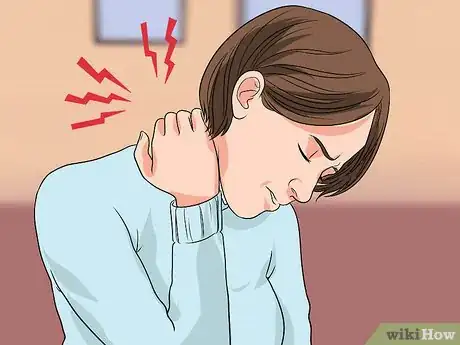
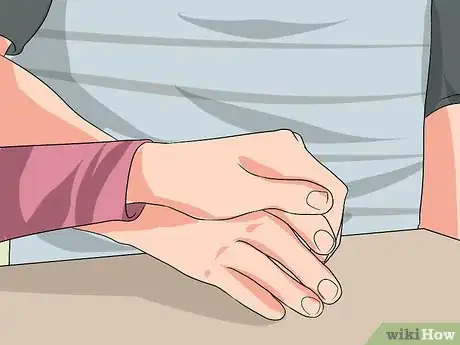






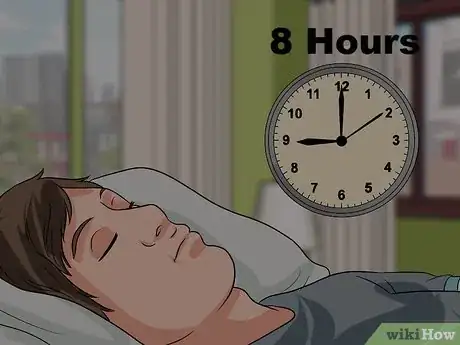
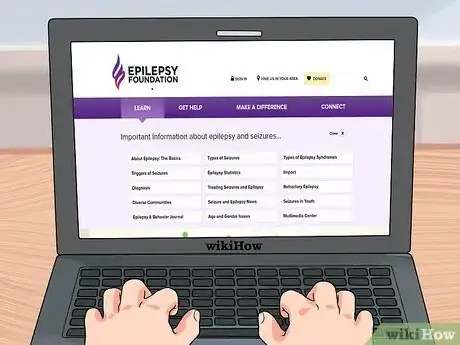
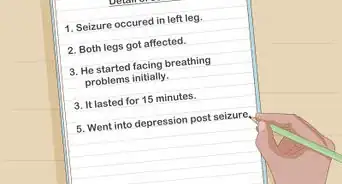












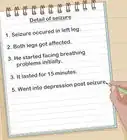






































Medical Disclaimer
The content of this article is not intended to be a substitute for professional medical advice, examination, diagnosis, or treatment. You should always contact your doctor or other qualified healthcare professional before starting, changing, or stopping any kind of health treatment.
Read More...